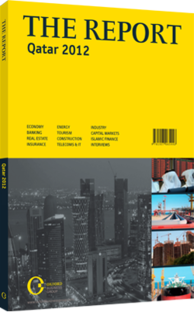Rising costs: Despite increasing prices, projects continue to attract interest
The construction boom being fuelled by a number of massive infrastructure and real estate projects across the GCC region is driving up the cost of construction and exposing several bottlenecks in regional supply chains. Qatar is particularly vulnerable to these costs as it seeks to develop billions of dollars worth of projects in time for the FIFA 2022 World Cup.
RISING COSTS: The rates of bitumen products, cement and steel have climbed significantly in the last few years, but building materials have not been reported to be in short supply. This is in contrast to the 2008 construction boom when there were marked shortages of basic construction materials. The total number of construction projects set to be launched in the next decade is now widely estimated to be worth over $250bn, a factor which the MEED Cost Indices (MCI) maintains will be responsible for an increase in construction costs of around 18% over the next five years alone. EC Harris’s 2012 “International Construction Costs” report indicates that one of the primary reasons for this is the number of large-scale projects in the pipeline, with an estimated 40% of the state’s budget being allocated to the sector. Qatar also depends almost entirely on importing construction materials and labour.
According to Emil Rademeyer, the general manager of MCI, cement supplies will fall short of expected demand by almost 3m tonnes a year in 2015. The Commercial Bank of Qatar supports this view in its “Qatar Construction Sector” report, which was released in early 2012, noting that the construction sector will likely witness shortages in raw materials between 2013 and 2017, as the period is set to be a peak, adding that the government will ensure shortages do not lead to unexpected rises in prices. The report also indicates that imports from Saudi Arabia and the UAE may help stabilise prices and ensure a steady supply of inputs.
Sheldon Morris, Deloitte and Touche’s head of capital projects advisory in Qatar, pointed to faults in the supply chain for the distribution of high volumes of bulk supplies as a major factor. Doha’s existing port facilities are currently a bottleneck in the supply chain with delays in imports coming through the port.
EASING BOTTLENECKS: However, the government is proactively investing in facilities and infrastructure to ease these bottlenecks. The $7.4bn New Port Project is scheduled to be operational by 2016 and will eventually span a 26.5-sq-km area with a total cargo capacity of 6m twenty-foot equivalent units. The port is part of a wider strategy that includes economic industrial zones and dedicated rail links to the New Doha International Airport. The $11bn airport will also improve linkages that will eventually have capacity to transport 2m tonnes of cargo through the country. Finally, an integrated rail network and major highways will soon connect Qatar with neighbouring countries.
While Qatar’s natural resources provide a buffer against higher costs, it is unclear how rising prices will affect the level of private sector interest in the sector.
Key measures, including the strategic phasing of major projects, will likely help stabilise prices of inputs and labour. Commenting on the construction costs report, Nick Smith, head of cost and commercial management for EC Harris in Qatar, said, “Whilst this is undoubtedly an exciting time to work in Qatar’s construction industry, the sheer volume of work planned over the next 20 years will create fresh challenges around successful project delivery.” He added that careful planning and a strategic approach to supply chain management will ensure companies are not overstretched and can plan ahead for when construction demand begins to peak.
Major road, rail, port and other infrastructure projects will ensure the state maintains its top position among the region’s best-performing construction markets. Indeed, according to a recent Qatar infrastructure report from Business Monitor International, the sector is going from strength to strength, growing by some 9.3% in 2011, with year-on-year growth of 9.5% forecast for 2012. All this comes despite a substantial rise in the cost of building materials, which points to the strength of demand in the country.
You have reached the limit of premium articles you can view for free.
Choose from the options below to purchase print or digital editions of our Reports. You can also purchase a website subscription giving you unlimited access to all of our Reports online for 12 months.
If you have already purchased this Report or have a website subscription, please login to continue.

